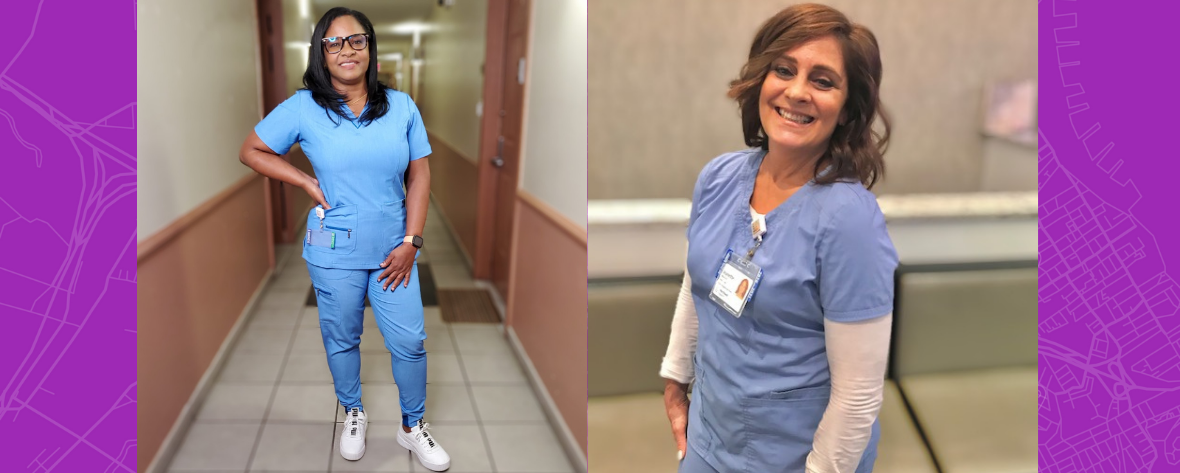
Children's Hospital Los Angeles's children's laboratory is known for its extensive pediatric pathology program. The lab's highly sophisticated methods enable it to evaluate a variety of patient specimens including biopsies and tissue samples from surgical resections. Three fellowship programs are offered by the department as educational resources. The department offers three fellowship programs for medical students. Are you interested to work in pediatric pathology as a physician? Apply for a job at this prestigious facility.
Filkins' background is as a child's hospital director.
Filkins, who was just a teenager, wanted to be lab director. Today, Filkins directs the microbiology lab at Children's Health System of Texas Dallas. He also works as an assistant professor of physiology at the University of Texas Southwestern Medical Center. He recalls his rotations through the different labs at ARUP, which provided a supportive environment for bench technicians. Filkins recalls frequenting the Infectious and Bacteriology labs.
Vicky Harris received her BS degree in medical technology from Marquette University, and her MBA from National Louis University. Vicky Harris is now the Arkansas Children's Hospital's Lab Director. Vicky was previously the administrative director for the laboratory department at Ann & Robert H. Lurie Children's Hospital Chicago for nine year. She was responsible for overseeing specialty labs and histology labs as well as the revenue cycle. Additionally, she led compliance activities. She was previously a 13-year veteran of Shriners Hospitals For Children Chicago as a lab director. Her expertise in pediatrics makes it a perfect fit for the post of director.

Diagnostic and screening tests
Children's hospitals in the United States are equipped with the most recent screening and diagnostic tests. The Pathology Professional Advisory Council is made up of medical pathologists and doctoral lab scientists. It provides education and support for hospital staff. On July 1, 1998, the Council was established. The Pathologists are open to questions regarding laboratory diagnostic testing. The staff of the laboratory welcomes questions about a specific patient's condition. They will be happy to discuss the latest laboratory diagnostic and screening tests.
A multicenter study on laboratory testing in children's hospitals showed that the frequency of testing varied across hospitals. But it did not affect the outcome of the patients. The findings suggest that there are opportunities to reduce laboratory overuse. Disclosure: The authors report no potential conflicts of interest. More research is needed to establish the role laboratory staff play in pediatric care. They will also discuss how to improve patient care in hospitals that order high frequency tests and which ones should be reduced.
Directors of medical services
You can find board-certified microbiologists in children's hospitals. Pathologists use microbiology labs to test for bacteria, viruses, etc. in order find out the causes of diseases. In the laboratory, over 100 technicians, scientists, phlebotomists, and other professionals provide rapid service to the care teams. These are some of our medical directors for children's hospitals laboratories.
Dr. Sarnecki has a Bachelor's degree in biology from Mount Saint Mary's College, and a Master's degree in healthcare information technology at Johns Hopkins Carey Business School. He worked for Children's of Alabama as a pediatrician and was the divisional director as well as department head for three consecutive years. In February 2019, he took on the responsibility of the specialty care services. He is a member of American Academy of Pediatrics.

Phlebotomy certification
As a phlebotomy technician, your job description may include the care of children in a hospital's lab. Your skills will include good communication skills and knowledge of medical terminology. The hospital has a 100-bed freestanding behavioral health center and trauma center. This job opportunity is described below. Certification in phlebotomy for pediatric hospital lab jobs
A phlebotomist 1 is responsible for taking blood samples and processing them for analysis. The phlebotomist I also uses computers to give information to the lab about patients. Phlebotomy training includes all aspects, including classroom lectures and student labs. For more information, visit the American Society of Phlebotomy website.
FAQ
What is a medical system?
Medical systems are designed so that people can live longer, more fulfilling lives. They ensure patients receive the best medical care, when and where they need it.
They ensure the best possible treatment at the right time. They give doctors the information they need to provide the best advice for each patient.
What role do I play in public health?
Participating actively in prevention efforts can help ensure your health and the health safety of others. Public health can be improved by reporting injuries and illnesses to health professionals, so that they can prevent further cases.
What are the different types of healthcare systems available?
The first system, which is traditional and where patients are not allowed to choose who they see for their treatment, is the most popular. They might go to hospital A only if they require an operation. Otherwise, they may as well not bother since there isn't any other option.
The second system is a fee-for-service system where doctors earn money based on how many tests, operations, and drugs they perform. You'll pay twice the amount if you don't pay enough.
The third system is a capitation system which pays doctors according to what they actually spend on care rather than by how many procedures they perform. This allows doctors to choose lower-cost treatments such as speaking therapies over surgical procedures.
Why do we need medical systems at all?
In developing countries, many people lack basic medical care. Many people in these areas die before reaching middle age due to infectious diseases like malaria and tuberculosis.
The vast majority of people in developed nations have regular checkups. Minor illnesses are usually treated by their general practitioner. However, many people continue to suffer from chronic conditions like diabetes and heart disease.
What are the three levels of health care facilities?
First, there are general practice clinics that provide basic medical care for patients who don't need hospital admission. If required, they can refer patients for treatment to other providers. This includes nurse practitioners, general practitioners and midwives.
The second level of care is primary care centers, which provide outpatient services that include emergency care. These include hospitals and walk-in clinics as well as urgent care centers.
The third level are secondary care centers, which offer specialist services such eye surgeries, orthopedic surgery, and neurosurgery.
Statistics
- Over the first twenty-five years of this transformation, government contributions to healthcare expenditures have dropped from 36% to 15%, with the burden of managing this decrease falling largely on patients. (en.wikipedia.org)
- About 14 percent of Americans have chronic kidney disease. (rasmussen.edu)
- For instance, Chinese hospital charges tend toward 50% for drugs, another major percentage for equipment, and a small percentage for healthcare professional fees. (en.wikipedia.org)
- Price Increases, Aging Push Sector To 20 Percent Of Economy". (en.wikipedia.org)
- Foreign investment in hospitals—up to 70% ownership- has been encouraged as an incentive for privatization. (en.wikipedia.org)
External Links
How To
What are the Key Segments in the Healthcare Industry's Industry?
The key segments of the healthcare industry include medical devices, pharmaceuticals, diagnostics, biotechnology, therapeutics, health information technology, medical equipment, etc.
Defibrillators, blood pressure monitors (defibrillators), stethoscopes, and ultrasound machines are some examples of medical devices. These products are typically used to diagnose, prevent, and treat diseases.
Pharmaceuticals are medicines that are prescribed to cure disease or relieve symptoms. Examples include antibiotics, antacids, antihistamines, contraceptives, etc.
Diagnostics can be performed by laboratories to detect illness, injury, or other conditions. These include blood tests, urine samples and CT scans.
Biotechnology refers the process of creating useful substances from living organisms such as bacteria. Some examples include insulin, vaccines, and enzymes.
Therapeutics are treatments administered to humans to treat disease or relieve symptoms. They may involve drugs, radiation therapy, surgical interventions, etc.
The computer software programs called health information technology help doctors and their teams to manage patient records. It helps them track which medications are being taken, when they should be taken, and whether they are working properly.
Medical equipment is anything used to diagnose, treat, or monitor conditions or illnesses. Dialysis machines are dialysis tables, pacemakers ventilators, operating rooms, and other medical equipment.